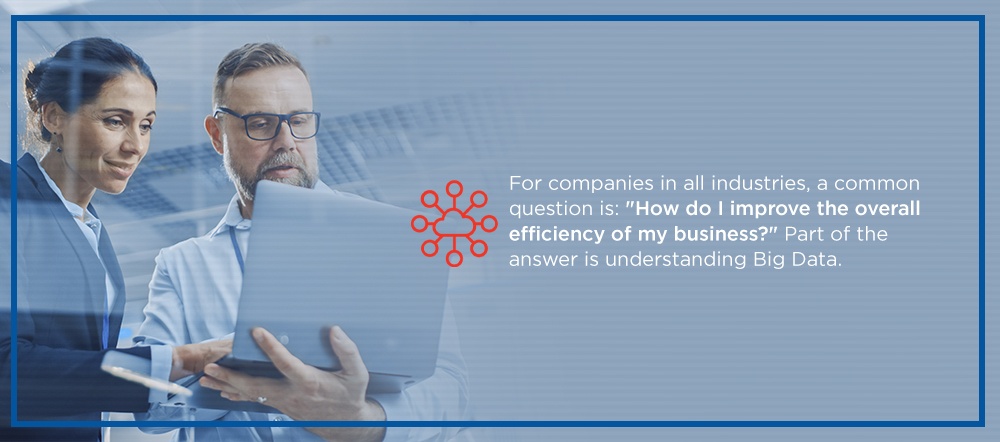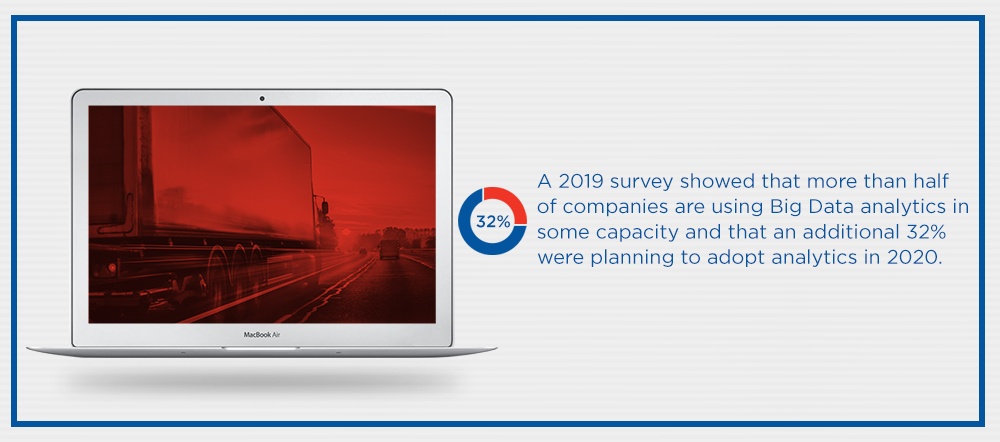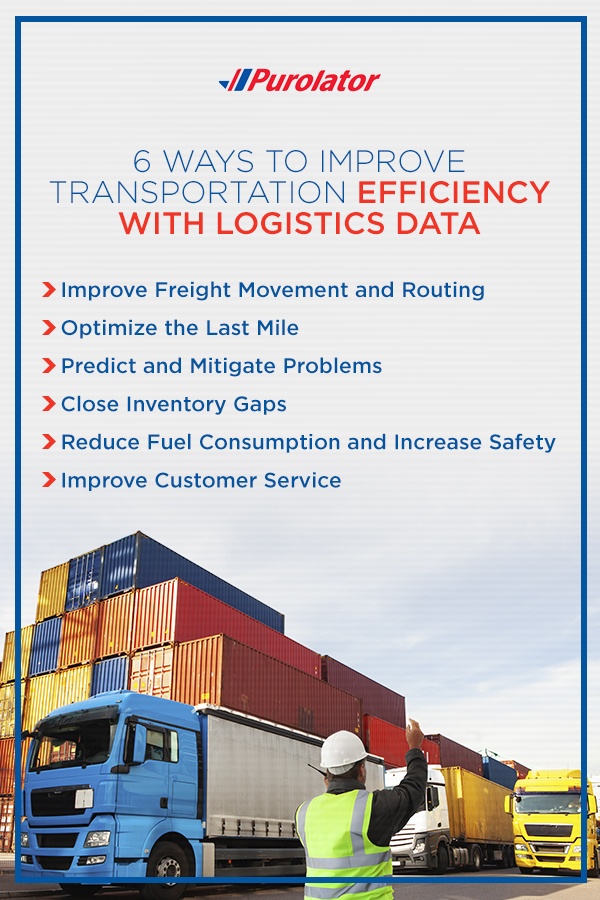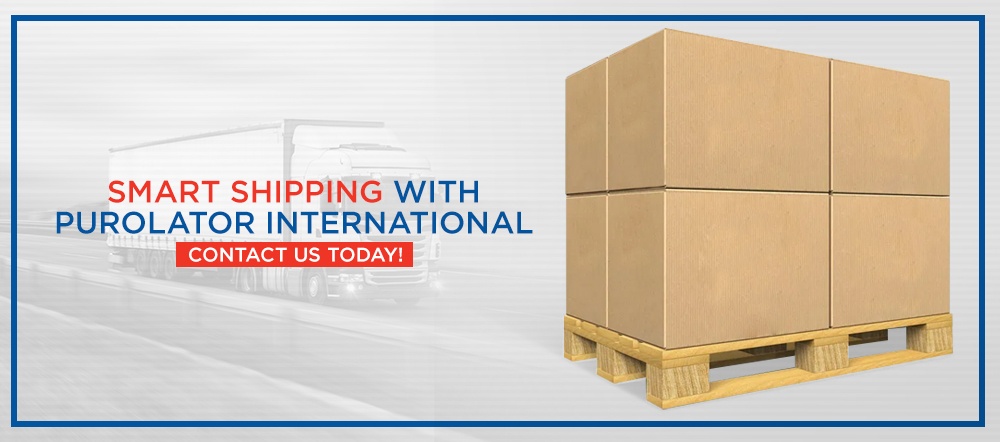Blog
Leveraging Transportation Logistics Data to Improve Operations
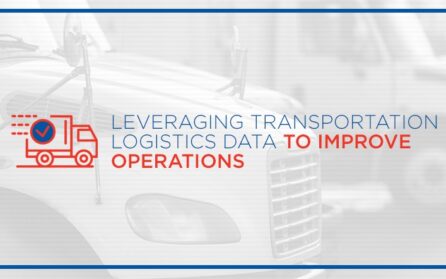
Successful logistics management depends on consistent innovation and leveraging available technology to continually improve operational efficiency. Today, the biggest emerging technology logistics professionals need to keep up with the competition is Big Data. According to a 2019 survey of Fortune 1000 companies, 91.6% of C-level executives said their companies were increasing investments in Big Data and artificial intelligence (AI), and 91.7% believed those investments were necessary to remain competitive and agile in their industries.
We’ll dive into what you need to know to take advantage of deep logistics data in learning how to streamline transportation operations and improve your company’s bottom line.
What Is Big Data?
For companies in all industries, a common question is: “How do I improve the overall efficiency of my business?” Part of the answer is understanding Big Data. The term “Big Data” refers to bodies of information that are so immense, transferred so quickly and so complex that traditional methods of processing cannot reasonably handle it. The most popular definition of Big Data is the one Gartner, Inc. developed in 2001. This conceptualization has three components.
The Three Vs
The three Vs offer a simple way to understand the driving forces and characteristics behind Big Data.
- Variety: There are more types of data and more ways to collect it than ever before. Big data relies heavily on novel forms of information like that gathered from sensors, GPS and relational data.
- Velocity: This refers to the speed with which incoming data is processed and transferred. One of Big Data’s greatest benefits is the ability to gain real-time insights thanks to instantaneous collection and transfer.
- Volume: The data pools companies have access to are growing in size as well as variety. It is not uncommon to see data sets in terms of petabytes, and exabyte data sets are not far over the horizon.
Cost-Effectiveness and Innovation
Big Data refers to the information as well as the methods used to process it. This element of the definition concerns our growing ability to:
- Harvest, store and process unstructured data.
- Create links between data of disparate types and origins.
- Comprehensively analyze data.
These capabilities broaden the possibilities of what businesses can achieve through data analysis, providing strong foundations for innovation across all industries.
Enhanced Insight and Decision-Making
The ultimate goal of using Big Data and its surrounding technologies in logistics is to creatively optimize systems, supply chains and processes for greater efficiency and profitability. Analysis of Big Data provides a fuller understanding of gaps and opportunities businesses can leverage to succeed against stiff competition.
Data that is trusted, verifiable and managed well leads to trustworthy analysis and more justifiable decisions at every level of supply chain management. Logistics data is the key to shifting toward a data-driven paradigm where leaders make decisions based on the evidence data presents, rather than simple instincts. Choices rooted in data analysis are easier to evaluate against their results, making Big Data key in improving key performance indicators (KPIs).
What Is the Importance of Leveraging Data?
The use of Big Data is driven by huge shifts in business relationships with customers. Your customers, whether they are other businesses or individual consumers, now have more options than ever before when it comes to getting their materials and products. Customers expect greater transparency in transportation logistics, and using all the data at your disposal is a smart way to provide it.
The other key reason to adopt transportation data analysis is staying on the leading edge of the industry. A 2019 survey showed that more than half of companies are using Big Data analytics in some capacity and that an additional 32% were planning to adopt analytics in 2020. There is simply no way to remain truly competitive in the logistics industry without taking advantage of all the data available to your company.
6 Ways to Improve Transportation Efficiency With Logistics Data
With a better understanding of how Big Data can impact logistics, the question becomes: “How to improve the productivity of transportation at my business?” Here are six ways companies can improve overall efficiency through analysis of logistics data.
1. Improve Freight Movement and Routing
Companies with a transportation element to their business must constantly consider new ways to optimize logistics. Doing so helps save money while also reducing the incidence of late shipments. Professionals managing delivery systems or supply chains need to find the balance between over-extending resources and failing to provide enough to complete key processes. If too many vehicles and hours are spent on a single delivery route, it means you are spending an excessive amount of money that could have a better impact elsewhere.
On the other hand, underestimating the number of vehicles and amount of time it takes to complete a specific route or delivery results in late shipments that damage relationships and tarnish your company’s public image.
An additional challenge to efficient optimization is the number of variables that can change at any given moment. Some variables that are difficult to incorporate include:
- Constantly changing fuel costs.
- Closures or construction of highways and roads on delivery routes.
- Fluctuating fleet size based on new acquisitions and repairs or maintenance needs.
- Unpredictable weather conditions that can defy forecasts and create difficult conditions for safe transport.
Traditionally, transportation operations would need to combine data on these variables manually and have a person calculate the optimal way to complete shipments and deliveries. However, that approach does not account for how quickly these variables can change. With down-to-the-minute updates on traffic through GPS data, for example, logistics systems can alter driver routes to account for an accident on the route or a road closure.
2. Optimize the Last Mile
The “last mile” problem is another aspect of route optimization that deserves separate exploration. Companies can optimize the full process of shipment and delivery up to the last mile before the shipment reaches its final destination. That final leg of the delivery process accounts for up to 28% of total transportation cost for reasons including:
- Parking: Finding a nearby parking spot is often difficult. Drivers may have to park farther away and walk the delivery to the address, potentially having to climb multiple flights of stairs or wait for an elevator.
- Failed delivery: If an item requires a signature and the recipient does not answer, the delivery cannot be completed.
- Accidental damage: During this last leg of delivery, the personnel in charge of it must take care not to damage the item.
The last mile is where the process can become a mystery. Average package tracking typically stops at this point, leaving a potentially significant gap in tracking information between the distribution center and the shipment’s final destination. Filling this gap completes the span of transportation data needed to optimize the process.
A comprehensive logistics system leverages low-cost data sources like GPS trackers, scanners and sensors to provide a complete picture of the delivery process including the last mile. The most accessible and easy-to-implement example is fleet tracking technology. A delivery truck equipped with a GPS tracker can provide information about where the truck is in the delivery process, and combining that data with further GPS data from the employee’s phone ensures seamless tracking until the package is scanned as delivered at its destination.
This confluence of data ensures there aren’t any blank spots throughout the transportation process, providing more opportunities to identify patterns and improve transportation efficiency.
3. Predict and Mitigate Problems
A traditional problem with supply chain logistics is transparency throughout different stages of the chain. If a materials supplier doesn’t immediately know that one of their cargo ships has been delayed during shipment, they will take longer to inform their customer that the delivery will be late. This has a bullwhip effect throughout the supply chain, causing confusion and sometimes chaos in industries dependent on fast turnaround times.
Sophisticated logistics data analysis incorporates multiple streams of data into a responsive system that facilitates communication between different links of the supply chain. For example, an AI or machine learning system can take GPS data plus weather data and conclude that an upcoming weather system in a certain area will likely delay a shipment. The company can then inform partners of the expected delay so each party can take appropriate action to minimize the delay’s impact.
Sensors placed in trucks, ships and planes can also be diagnostically invaluable. Vehicles are the heart of any transportation service, and they are often a blind spot when it comes to breakdowns and sudden need for repairs. Fleet tracking sensors track variables like how fast the vehicle is going, how long it runs, how long it idles and more. This data on the health of engines and equipment can potentially alert managers to possible failures and make maintenance scheduling more precise. This predictive approach enhances safety and cuts fleet costs by reducing unplanned downtime and preventable failures.
4. Close Inventory Gaps
Transportation only goes smoothly when the items that need to be moved are actually in stock. What do customers do when they want to order a product? What will a supplier’s partners do when the requested materials can’t be delivered? In both cases, the customer will either have to wait for the inventory problem to be corrected, or they will drop your company in favor of another with better inventory management practices.
Even when stock leaves the warehouse and begins transit, it is still part of an organization’s inventory despite physically being somewhere else. Knowing where each piece of inventory is at any given moment is essential to efficient operations, especially for businesses that experience a lot of order changes at the last minute. Transportation data should include detailed information on inventory counts, order cuts and logs of when products arrive and depart. This coverage of potential gaps prevents frustration and can reveal inventory patterns that can be leveraged for better practices.
The biggest companies are using cutting-edge inventory technology to ensure accurate stock maintenance. The larger a business is, the more likely it is to have an internal supply chain — complicating the tracking process. To maintain the optimal stock of inventory, companies have to keep track of their transport logistics.
The “smart warehouse” takes advantage of real-time data from multiple sources to increase the ability to monitor and track inventory as it moves through each step in the transportation and delivery process.
5. Reduce Fuel Consumption and Increase Safety
Fuel consumption is an immense cost for the logistics industry. Whether a company is optimizing overseas cargo shipping routes or local product deliveries direct to consumers, the cost of fuel has an enormous impact on the cost of doing business. Transportation data offers insights that managers can use to measure fuel efficiency and implement policies that result in less fuel waste. Fleet tracking sensors and software provide crucial information on:
- Specific routes: GPS tracking will show when shorter routes are available, and can track when employees ignore the more efficient route.
- Driving habits: Accelerating hard, speeding and braking rapidly can reduce fuel efficiency by 15 to 30% on the highway and 10 to 40% in stop-and-go traffic.
- Idling: Idling is a big drain on fuel and accelerates engine wear at the same time. Equipping vehicles with sensors can help hold drivers accountable for excess idling and promote better driving habits.
A real-world example of leveraging data to reduce fuel costs comes from one of the largest international delivery and supply chain management companies. UPS examined its transportation logistics data and found that drivers turning left was a big resource drain. The company changed its routing strategy so that drivers continued straight or turned right whenever possible, even in some cases where doing so resulted in technically longer routes.
As a result, the company saves 10 million gallons of fuel, slashes its emissions by thousands of tons and is able to deliver hundreds of thousands more packages each year.
6. Improve Customer Service
Transportation data has a significant role to play in customer service as well as optimization. Companies can reduce costs and increase efficiencies as much as possible, but it doesn’t make the maximum impact if they don’t also use that data to provide a better experience for the customer.
Today, customers fully expect to see some transparency in the shipping process, and many are willing to switch to another company if that company provides a more seamless and information-rich experience. When faced with the choice between buying from a company that provides no information between “shipped” and “delivered” or buying from a company that provides periodic updates at each stage of shipment, customers are far more likely to choose the latter.
Transportation data is also essential in keeping customers updated in the event of a delay. Systems can be set up to immediately inform customers when a problem arises with their shipment and can provide updated estimates automatically. This use of data reduces the amount of time customer service has to spend handling these basic inquiries and complaints.
Smart Shipping With Purolator International
Shipping from the U.S. to Canada is more complex than shipping domestically and comes with a variety of logistical challenges many companies are not equipped to handle alone. Purolator International leverages a multitude of data sources and types to provide optimized supply chain logistics solutions.
If you are interested in learning more about how Purolator International is leveraging Big Data for managing transportation operations or want to explore options for shipping from the U.S. to Canada, fill out our online contact form today to connect with a knowledgeable customer service representative.
